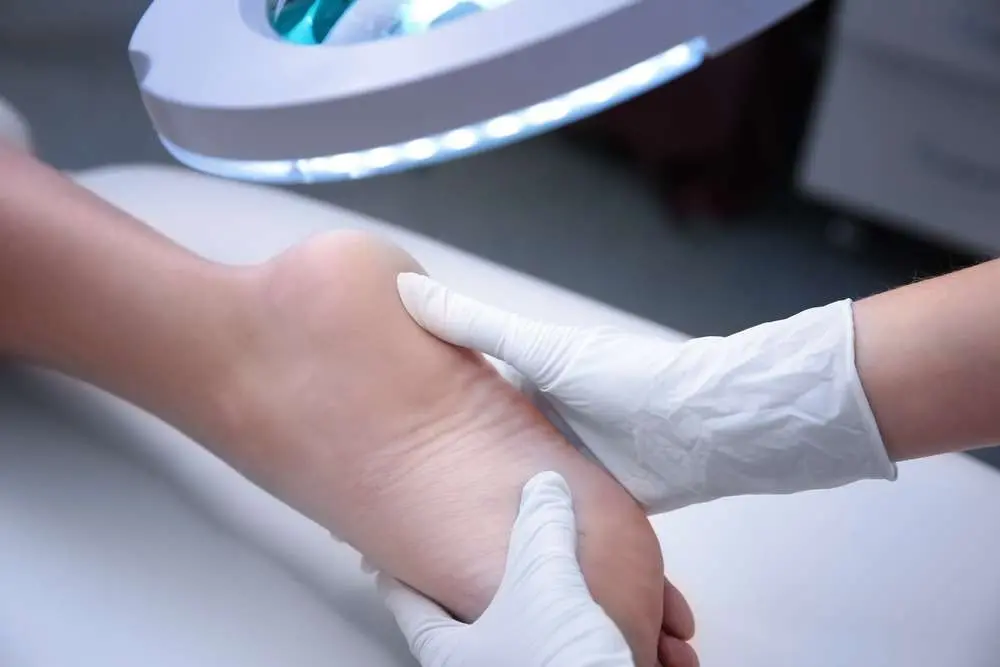
Recognized as a footcare health professional, the podiatrist treats a wide variety of chronic and acute pathologies.
The podiatrist’s expertise allows them to treat joint pain and biomechanical and dermatological problems, such as plantar warts.
Find out what preventive care and treatment the podiatrist can provide to ensure that your plantar warts are no longer a bother to you.
When should you ask a podiatrist for help?
Although not a very pleasant experience, plantar warts are normally quite harmless.
However, some of these lesions often require the intervention of a podiatrist.
Below are some of the characteristics that may indicate the presence of a problematic plantar wart:
- It keeps reappearing
- Redness persists around the lesion
- Wart spreads to other areas of the foot or leg
- Pain develops while walking
- The lesion will ooze or give off an unpleasant odour
In addition to these rather worrisome symptoms, other reasons may lead you to seek the advice of a podiatrist for your plantar warts.
For example, if it affects your gait, or if you are afraid of spreading the virus to your loved ones, it may be a good idea to ask for a consultation in a clinic.
Obtain a diagnosis
If you are not sure of the exact nature of a lesion on the sole of your foot, your podiatrist is the ideal person to identify its origins.
There are normally two types of plantar warts that are likely to appear on the soles of the feet: myrmecia and mosaic warts.
Each with its own appearance, these warty lesions do not necessarily require the same medical attention.
This is where your podiatrist can help.
Using a series of tests, your podiatrist can evaluate this dermatological problem.
The following methods are commonly used by the podiatrist to diagnose a plantar wart:
- A visual exam: Most of the time, the single plantar wart (myrmecia) has a particular appearance and is therefore easy to recognize.
- A swab: Sometimes a plantar wart can be confused with other lesions such as corns or calluses. To distinguish between them, a swab sample may be used by the podiatrist.
Treatments offered in the clinic
Although some plantar warts can be treated in the comfort of your home, others tend to become painful and reappear periodically.
The podiatrist offers personalized medical treatments to help treat these troublesome lesions.
The podiatrist offers you therapeutic methods such as:
- Prescription medications
- Cantharone treatment
- Injections of bleomycin sulfate directly into the affected area
- Cryotherapy (liquid nitrogen therapy)
Nevertheless, if the plantar wart does not respond well to classic conservative treatment methods, minor foot surgery may be required.
In the event of surgery, the podiatrist can remove the plantar wart using procedures such as:
- Laser therapy
- Complete ablation of the wart (minor foot surgery)
The podiatrist holds a doctorate in podiatry medicine, and is therefore qualified to perform these minor surgical procedures in the clinic.
Your podiatrist and preventing plantar warts
Following foot surgery, no matter how minor, the podiatrist normally performs a post-operative follow-up.
The purpose of this follow-up is to ensure that your wound heals well and that no warts reappear.
In addition to their medical skills in the removal of warts, the podiatrist is also a valuable ally in the prevention of warts.
For example, your podiatrist may offer advice on how to choose the proper footwear or give you tips to help maintain proper foot hygiene.
Plantar warts are easier to treat when they are addressed without delay.